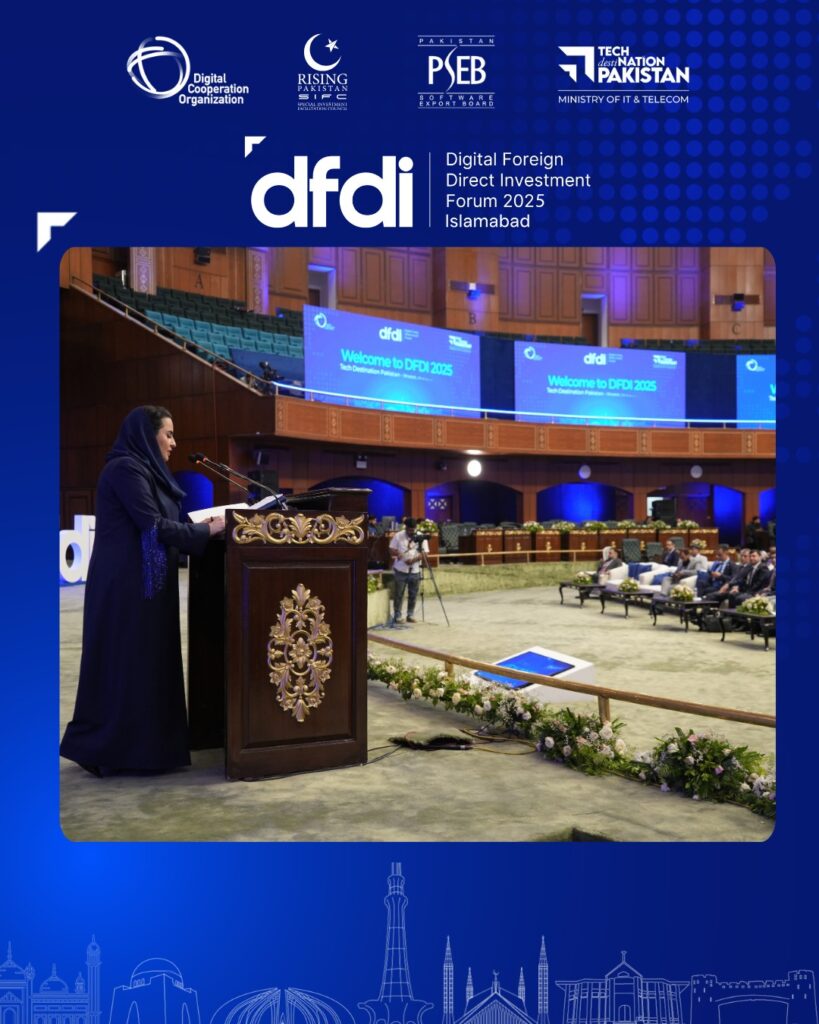Table of Contents
DFDI in Emerging Markets is Reshaping Global Investment Trends
DFDI in emerging markets is rapidly gaining momentum as investors seek not only profitable returns but also meaningful social and environmental impact. Development-focused direct investment (DFDI) is a form of foreign investment that aims to stimulate long-term economic development in host countries, especially within emerging economies. Unlike traditional FDI, DFDI focuses on inclusive growth, sustainable infrastructure, and capacity-building.
This article will provide a comprehensive understanding of DFDI in emerging markets, including benefits, challenges, top regions, and successful case studies. Whether you’re an institutional investor or a development agency, mastering the dynamics of DFDI can be your key to unlocking massive opportunities in the global south.
What Is DFDI in Emerging Markets?
DFDI in emerging markets refers to capital investment made directly into projects or businesses in developing countries with the goal of fostering inclusive and sustainable development. These investments often prioritize sectors such as:
- Clean energy
- Education and skill development
- Healthcare
- Infrastructure
- Agricultural innovation
- Digital technology
DFDI stands apart by aligning with environmental, social, and governance (ESG) goals, enabling host nations to achieve both economic growth and social equity.

Why DFDI in Emerging Markets Matters More Than Ever
Emerging markets represent over 80% of the world’s population and contribute significantly to global GDP growth. However, many of these countries face funding gaps in critical sectors. That’s where DFDI in emerging markets plays a transformative role. Investors benefit by gaining early access to high-growth sectors while communities receive much-needed support in terms of jobs, services, and innovation.
Expanded Benefits of DFDI in Emerging Markets
Development-Focused Direct Investment (DFDI) in emerging markets brings a wide array of benefits not only to investors but also to the host countries and local communities. Here’s a deeper look at the advantages that make DFDI such a powerful and impactful investment approach:
1. Accelerated Infrastructure Development
One of the most significant benefits of DFDI in emerging markets is the rapid development of infrastructure. DFDI often targets roads, bridges, power plants, water supply systems, and digital connectivity—all of which are foundational to economic growth. Improved infrastructure:
- Enhances supply chain efficiency
- Lowers operational costs for businesses
- Facilitates trade and market access
- Promotes regional development
2. Job Creation and Workforce Empowerment
DFDI in emerging markets contributes to massive job creation. Unlike speculative investments, DFDI typically involves the setup of physical assets and services that require skilled and unskilled labor. Moreover, DFDI-backed projects often include:
- On-the-job training programs
- Vocational education
- Leadership development for locals
This strengthens the local labor market and reduces brain drain.
3. Technology Transfer and Innovation
Another key benefit of DFDI in emerging markets is the transfer of advanced technology and innovation. Multinational corporations often bring state-of-the-art equipment, digital tools, and industry best practices to host countries. This transfer helps:
- Improve productivity
- Reduce technical gaps
- Enhance competitiveness
- Stimulate local entrepreneurship
4. Increased Tax Revenue for Governments
When investors enter emerging markets with DFDI, governments benefit from new tax revenue sources. This revenue can be used to:
- Build schools and hospitals
- Improve public safety
- Subsidize renewable energy
- Support social welfare programs
Even if tax incentives are offered early on, the long-term fiscal gain from successful DFDI projects is considerable.
5. Boost to Local SMEs and Supply Chains
DFDI in emerging markets supports the development of local supply chains. As foreign investors establish operations, they often partner with local small and medium enterprises (SMEs) for:
- Raw materials
- Logistics and transportation
- Facility maintenance
- Marketing and distribution
This integration increases demand for local goods and services, boosting domestic industries.
6. Gender Inclusion and Social Equality
Many DFDI projects are aligned with inclusive policies that empower women and marginalized groups. These projects often emphasize:
- Equal hiring practices
- Support for women-led businesses
- Access to education and healthcare
Such initiatives promote social cohesion and uplift underrepresented communities.
7. Stable Long-Term Returns for Investors
For investors, DFDI in emerging markets presents an opportunity for stable, long-term financial returns. Because DFDI focuses on real assets and sustainable sectors like energy, healthcare, and education, it tends to:
- Show resilience during global downturns
- Offer inflation-hedged cash flows
- Grow in tandem with population and economic development
8. Enhanced Global Influence and Diplomacy
Countries and corporations that invest through DFDI gain soft power by contributing to development goals. These efforts help:
- Strengthen diplomatic ties
- Improve foreign relations
- Position companies as ethical and forward-thinking leaders
9. Environmentally Sustainable Development
Many DFDI projects are focused on green growth, such as renewable energy, eco-friendly construction, and waste management. These efforts:
- Reduce carbon emissions
- Preserve natural resources
- Support climate goals under the Paris Agreement
For instance, DFDI-backed solar farms in rural Africa have replaced diesel generators, offering cleaner and more affordable energy.
10. Strengthening Financial Ecosystems
DFDI in emerging markets also helps to develop local financial systems. As demand for project financing grows, local banks, microfinance institutions, and investment funds evolve to serve these needs. This leads to:
Better savings and insurance penetration
Improved access to credit
Growth of capital markets
Challenges of DFDI in Emerging Markets
1. Political and Regulatory Risks
Government instability or lack of clear investment regulations can impact project viability.
2. Infrastructure Gaps
While DFDI often targets infrastructure, initial deficits can increase setup time and costs.
3. Currency and Financial Instability
Volatile exchange rates and inflation can affect long-term profitability.
4. Cultural and Operational Differences
Understanding local cultures, labor laws, and market behavior is critical for successful implementation.
Top Regions for DFDI in Emerging Markets
1. Sub-Saharan Africa
High demand in renewable energy, agriculture, and digital inclusion.
2. Southeast Asia
Countries like Vietnam, Indonesia, and the Philippines offer DFDI-friendly policies and growing consumer markets.
3. Latin America
Regions such as Colombia and Peru present opportunities in infrastructure and healthcare.
4. South Asia
India and Bangladesh lead in fintech, edtech, and clean tech DFDI projects.
Strategies to Succeed with DFDI in Emerging Markets
1. Partner with Local Stakeholders
Joint ventures and partnerships with local governments or businesses can reduce risk and improve execution.
2. Perform Deep Market Research
Understanding local needs and regulations ensures better alignment of DFDI objectives with regional priorities.
3. Utilize Blended Finance Models
Combine public and private capital to de-risk large-scale DFDI projects.
4. Engage in Impact Measurement
Track progress using social and environmental KPIs to ensure long-term viability and stakeholder trust.
Case Study: Successful DFDI in Healthcare – Kenya’s Mobile Clinics
A European DFDI initiative funded mobile health clinics in Kenya, targeting maternal health in remote areas. The project trained local nurses and utilized solar-powered mobile units. Result: Maternal mortality dropped by 20% in three years, and investor confidence in social infrastructure soared.
Technology’s Role in Driving DFDI in Emerging Markets
1. Digital Financial Services
From mobile banking to micro-loans, tech is enabling access to capital for millions.
2. E-Governance and Transparency
Digital platforms reduce corruption and streamline investment approvals.
3. Agricultural Technology
DFDI is boosting crop yields and food security via smart farming tools.
Regulatory Frameworks Supporting DFDI in Emerging Markets
Governments in emerging markets are actively reforming investment laws to attract DFDI. Tax incentives, relaxed ownership rules, and fast-tracked permits are common tools being used.
Examples:
- India’s Production Linked Incentive (PLI) Scheme
- Ethiopia’s Industrial Parks Law
- Indonesia’s Omnibus Law on Job Creation
How DFDI in Emerging Markets Influences Global Trade
As emerging economies grow due to DFDI, they become integral parts of global supply chains. This leads to:
- Increased exports
- Regional trade alliances
- Improved bilateral relations
- Enhanced global competitiveness
Green Investments: The Future of DFDI in Emerging Markets
1. Solar and Wind Energy Projects
DFDI in solar parks across Africa and Asia is accelerating access to clean energy.
2. Electric Vehicle Infrastructure
Latin American countries are attracting DFDI for EV charging stations and battery plants.
3. Circular Economy Startups
Investors are backing local businesses that recycle, reuse, and reduce waste.
How to Start DFDI in Emerging Markets
Step 1: Define Your Sector Focus
Identify whether you want to target healthcare, education, energy, or agriculture.
Step 2: Choose the Right Region
Evaluate regional stability, demand, and legal structures.
Step 3: Conduct Risk Assessment
Analyze political, economic, and operational risks with local consultants.
Step 4: Secure Local Partnerships
Collaborate with NGOs, governments, and local businesses for smoother integration.

Conclusion: DFDI in Emerging Markets Is a Win-Win
DFDI in emerging markets isn’t just an investment strategy—it’s a pathway to global prosperity. Investors can benefit from untapped markets while positively impacting communities. The synergy between profit and purpose makes DFDI an ideal choice for the next generation of conscious capitalists.
FAQs: DFDI in Emerging Markets
1. What does DFDI stand for?
DFDI stands for Development-Focused Direct Investment. It aims to promote long-term, sustainable development in host countries.
2. How is DFDI different from traditional FDI?
Unlike traditional FDI that often seeks only financial returns, DFDI integrates social, environmental, and governance goals into investment strategies.
3. Is DFDI profitable?
Yes, DFDI can be profitable, especially with early entry into high-growth markets and sectors that have long-term government support.
4. Which sectors are ideal for DFDI?
Healthcare, education, renewable energy, technology, and agriculture are commonly targeted sectors.
5. Are there tax incentives for DFDI?
Many emerging markets offer tax breaks, subsidies, and fast-tracked permits for investors focused on development-related sectors.
6. What are the biggest risks with DFDI?
Political instability, regulatory uncertainty, and currency fluctuations are key risks to consider.
7. How can I measure the impact of DFDI?
Use ESG metrics, SDG alignment, and independent impact assessments to evaluate effectiveness.
Follow us on Facebook for Quick Response & Quires – Digital Foreign Direct Investment (DFDI)
